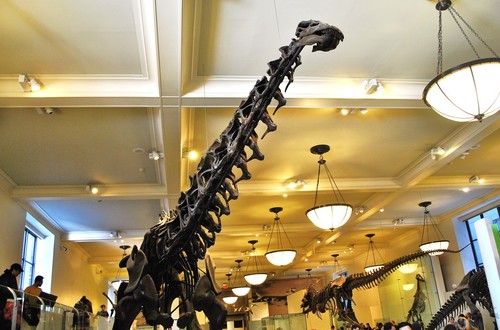
Brontosaurus
The Brontosaurus, a majestic sauropod, roamed Jurassic floodplains with its towering neck and sweeping tail. A herbivore, it grazed treetops, shaping ancient ecosystems. This dinosaur, once overshadowed by its relatives, now stands as a symbol of prehistoric splendor and scientific intrigue.
13608.0 - 17236.0 kg
Weight
Length: 21.9456 m
Size
Characteristics
Brontosaurus, once considered synonymous with Apatosaurus, is a genus of large sauropod dinosaurs known for their long necks, massive bodies, and whip-like tails. They inhabited the Late Jurassic period's floodplains in North America, thriving in lush environments. These gentle giants were herbivorous, feeding on vegetation high above the ground.
Distribution Range of the Brontosaurus
Brontosaurus species, including Brontosaurus excelsus, Brontosaurus parvis, and Brontosaurus yahnahpin, were native to the western regions of North America during the Late Jurassic period. This includes areas that are now part of the United States, specifically the Morrison Formation, which spans across parts of states such as Wyoming, Colorado, Utah, and Oklahoma.
Brontosaurus's Habitat
Environmental Conditions
During the Late Jurassic, the environment of the Morrison Formation was characterized by a semi-arid climate with distinct wet and dry seasons. This region featured a mix of floodplains, river channels, and open woodland areas, which supported a diverse array of plant life including ferns, cycads, conifers, and ginkgoes.
Ecological Niche
Brontosaurus species were large herbivorous dinosaurs that likely browsed on high vegetation due to their long necks, feeding on leaves and other plant materials. They played a significant role in their ecosystem as mega-herbivores, influencing vegetation patterns and interacting with other species, both plant and animal.
Copyright @ Nature Style Limited. All Rights Reserved.
 English
English